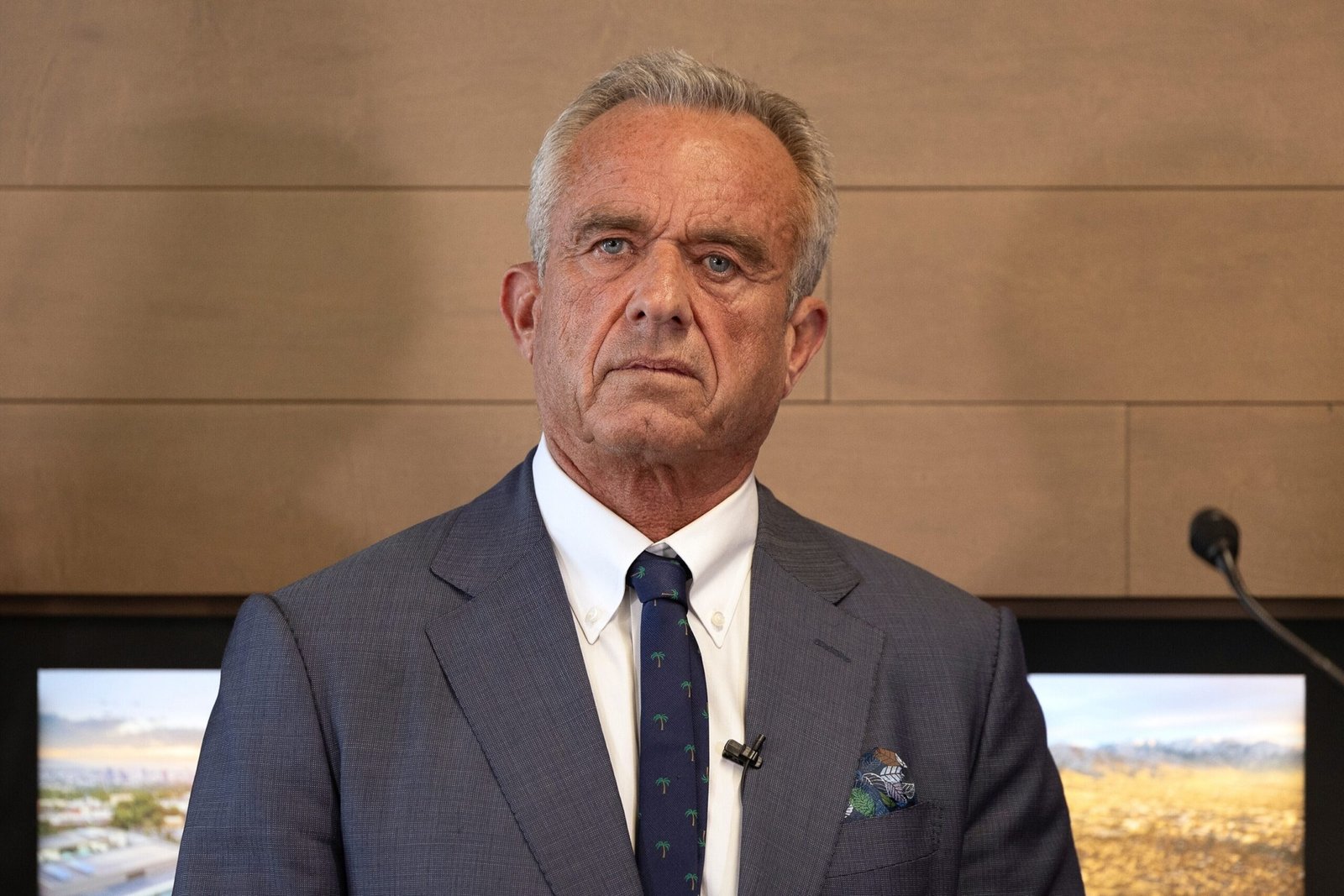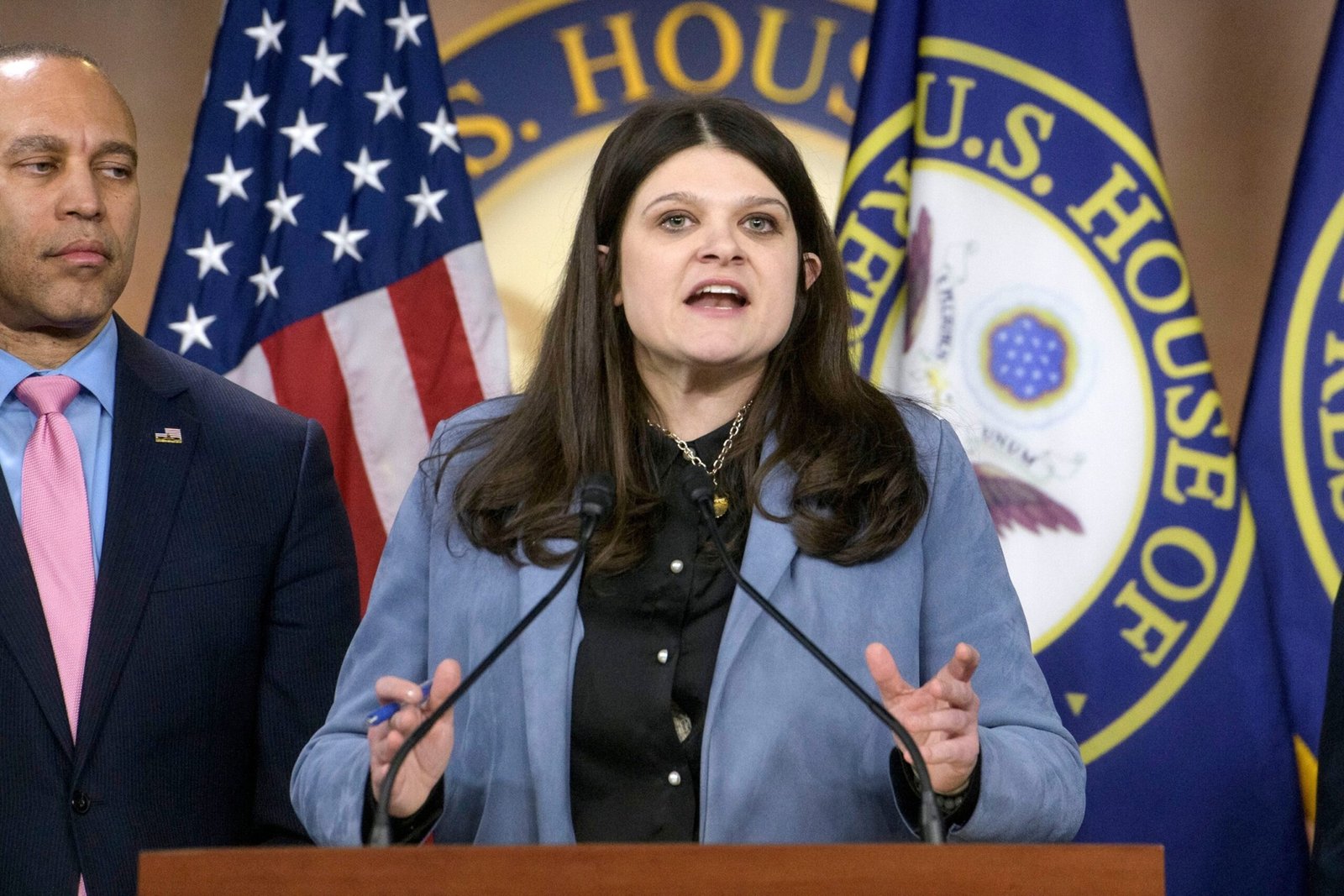The Department of Health and Human Services and the Food and Medicines Administration announced on Tuesday a series of measures to eliminate eight artificial food dyes and food supply in the United States food supply at the end of next year.
Speaking at a press conference, HHS Secretary Robert F. Kennedy Jr. said agencies will work with food companies to eliminate product dyes.
“I just want to urge you all, it is not the time to stop; it is time to redouble their efforts, because now we have them fleeing, and we will win this battle,” Kennedy told a multitude of supporters of “Make America Healy Again” during the press conference. “And within four years, we will have most of these products outside the market, or you will know about them when you go to the grocery store.”
At the press conference, the FDA Commissioner, Dr. Marty Makary, said the agencies seek to revoke the authorization of two synthetic food coloring and work with the food industry to eliminate six remaining synthetic dyes used in cereals, ice cream, snacks, yogurts and more.
“Today, the FDA is taking measures to eliminate oil -based food dyes from the US food supply and medicines. During the last 50 years, American children have been living more and more in a toxic soup of synthetic chemical products,” he told reporters.

The Secretary of Health and Human Services, Robert F. Kennedy Jr., observes during a press conference on April 7, 2025 at Salt Lake City.
Melissa Majchrzak/AP
The administration of former President Joe Biden in January began the process to ban an artificial dye, Red No. 3, which must be eliminated from food in January 2027 and medicines by 2028 because it was shown that it causes cancer in rats. The FDA said Tuesday that it is asking food companies to accelerate the elimination of red. No. 3.
Federal officials are taking measures to obtain authorization for two rarely used synthetic dyes: Citrus Red No. 2 and Orange B, in the coming months. In addition, the other six oil -based dyes that federal health agencies seek to eliminate for next year are green No. 3, red No. 40, yellow No. 5, yellow No. 6, blue No. 1 and blue No. 2.
The FDA is also taking measures to authorize four new natural color additives, authorities announced on Tuesday.
Kennedy: ‘We have an understanding’ with food companies
However, the plan depends on an “understanding” with the main food companies that will voluntarily eliminate them to meet consumer demand, Kennedy said on Tuesday.
The HHS and the FDA are asking the food industry to “establish a national standard and a timeline … to transfer it from dyes based on petrochemicals to natural alternatives,” according to a press release sent on Tuesday afternoon.
It is not yet clear what application mechanism, Kennedy will seek to implement the new changes.
When asked if food companies, which were not present at the press conference, would follow the suggested changes, Kennedy said: “We don’t have an agreement; we have an understanding.”
Makary, the chief of the FDA, continued to say that the agency plans to work with the food industry instead of making Congress intervene. “We have had wonderful meetings with the food industry,” he said. “They are eager to do it.”
Talking to ABC News after the announcement, Makary maintained that the administration would fulfill its “bold objective” even though there were no immediate plans for new regulations to force the measure.
“There is no need to have a regulation or a statute when companies are voluntary to do so,” Makary said. “We are going to use all the tools in the toolbox to make sure that this is done.”
But the International Color Manufacturers Association, the Commercial Association for the color additive industry, which includes natural and synthetic dyes, issued a statement after the press conference questioned the proposed timeline.
“Require the reformulation at the end of 2026 ignores scientific evidence and underestimate the complexity of food production. This process is not simple or immediate, and the resulting supply interruptions will limit access to family and affordable supermarket articles,” said the group in the statement.
However, the association of consumer brands, which represents packaging food and beverages, indicated that its members would work with the administration to take measures on food dye priorities, citing the difficulty of complying with a “mosaic” of the different state laws.
“Consumer Brands has long asked HHS and the FDA that are restored as the leading regulatory authority of the country and we appreciate that the administration has reaffirmed its leadership in response to the mirian of state activity in the space of food regulation,” said the president of CBA, Melissa Hockstad, in a statement after Tuesday’s announcement.
Memo reveals food companies willing to voluntarily eliminate dyes
The proposed timeline to eliminate the synthetic dyes established on Tuesday occurs after Kennedy told the leaders of the food industry at a meeting last month that he wanted their companies to eliminate the artificial dyes of their products at the end of its four -year mandate, according to a note that describes the meeting, which was obtained by ABC News.
Days after that meeting, which included executives from Pepsico and General Mills, the association of consumer brands indicated that its members would be willing to voluntarily make the changes requested by Kennedy, according to a memorandum of March 20 sent to the HHS officials obtained by ABC News.
The two -page proposal establishes commitments that food companies were willing to make, including efforts within 30 days to start reformulating food to eliminate artificial dyes.
The memorandum did not contain an explicit commitment to eliminate all artificial dyes by the end of 2026, as Kennedy requested on Tuesday, but the proposal said that CBA members were committed to “agency support actions.”
The proposal also described a commitment for companies to supply food for school lunches that do not include artificial or dyes.
In exchange for working to eliminate food dyes, the commercial group asked the Trump administration to work against state legislation that has created a mosaic of laws around food dyes, which could lead to more restrictive prohibitions in other chemicals, not only food dyes, in certain states.
“President Trump and Secretary Kennedy need to communicate with the governors and the state legislatures that the administration is taking bold and transformative actions and continuous activities at the state level to undermine the president’s leadership and increase the costs for consumers,” wrote the commercial group in the memorandum. “A federal solution makes sense under a state mosaic regime.”
The red and blue states have already taken matters in their own hands to eliminate artificial food dyes from certain foods. Both West Virginia and California have approved laws to ban a handful of food dyes from school lunches, with plans to extend the ban at a broader state level.
In Western Virginia, the prohibition of artificial dyes in school lunch will enter into force in August, so it is the first state in the country to implement such restrictions. In California, it will enter into force in 2028.
Other twenty -six states, from Iowa to Washington and from Texas to Vermont, are considering similar legislation around the prohibition of food dyes or other chemical additives in food, according to a list compiled by the environmental work group, a defense organization that focuses on chemicals and toxins.
What are the health risks?
From sweets to breakfast cereal and synthetic food dyes are in a wide range of products consumed by Americans. Studies suggest that their vibrant color makes food more attractive and could even increase appetite.
Makary’s studies stated that they have found a link between oil -based synthetic dyes and health conditions, including care deficit disorder/hyperactivity, obesity, diabetes, cancer and gastrointestinal problems.
“Why are we betting?” said. “While the children in the United States are sick and suffer, 41% of children have at least a health condition, and one in five is taking medications. The answer is no more ozempic, more medicines for ADHD and more antidepressants. There is a role for those medications, but we have to consider the underlying root causes.”
But scientists warn that evidence of health risks is not so clear.
“There are studies in animals that show that food dyes have been associated with results such as cancer,” said ABC Dr. Darien Sutton medical correspondent. “But the FDA argues that these studies have not shown sufficient evidence that this damage could be done in humans.”
All dyes have the potential to cause allergic reactions for a small minority. Several dyes have been linked to hyperactivity and behavioral problems in children or it has been shown that they cause cancer in mice or rats, but none has shown that none causes cancer in humans.
“When you observe general evidence, it is difficult to see a clear cause and effect, but if there is no clear benefit by adding something like a food additive that is not making food look better, many argue that we simply eliminate it,” Sutton said.
While the effects on dyes health are not completely understood, many other countries have prohibited additives directly or required for food wagons on food risks.







